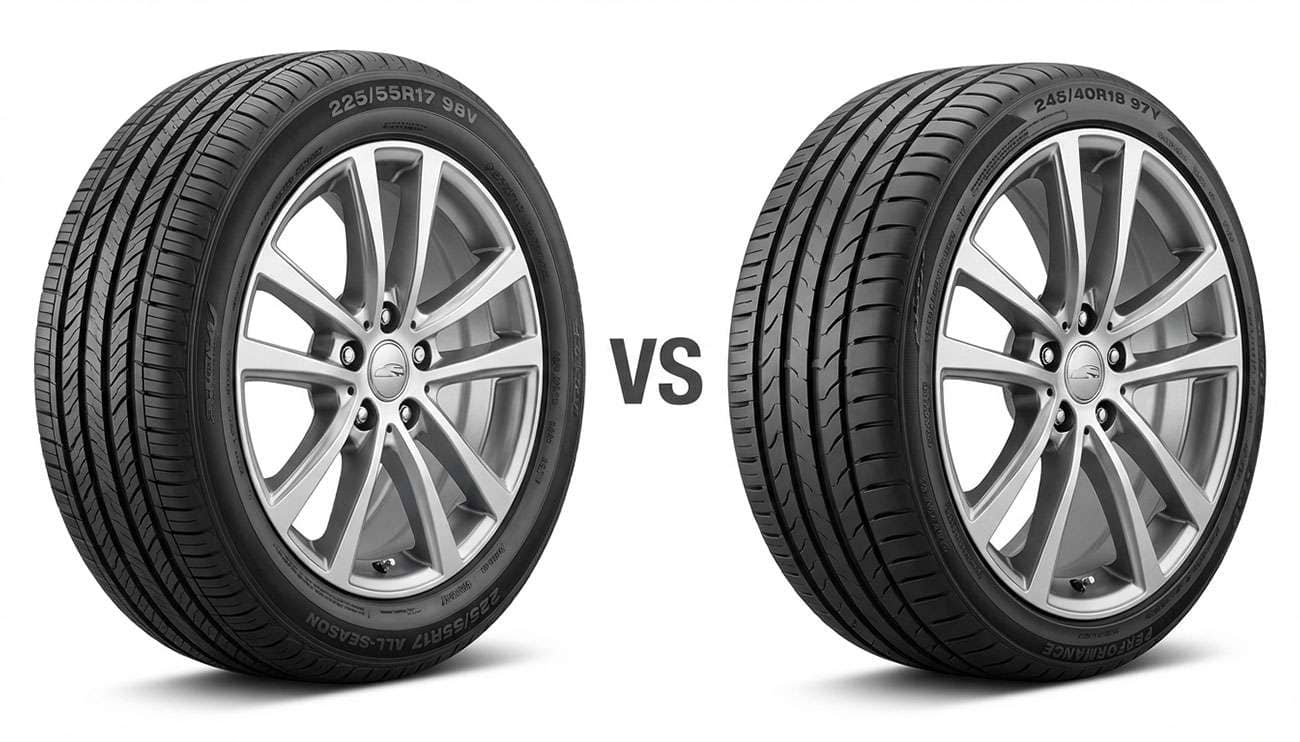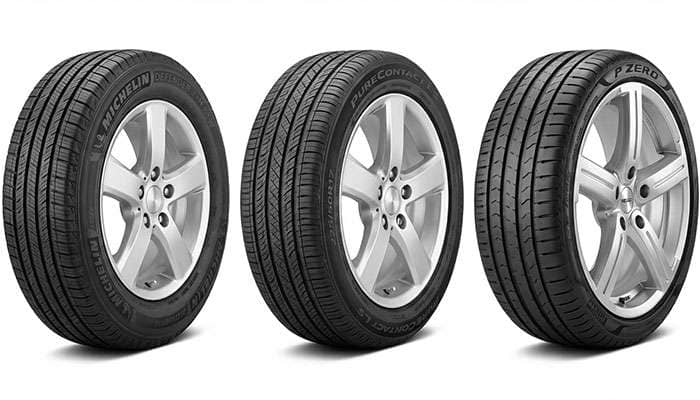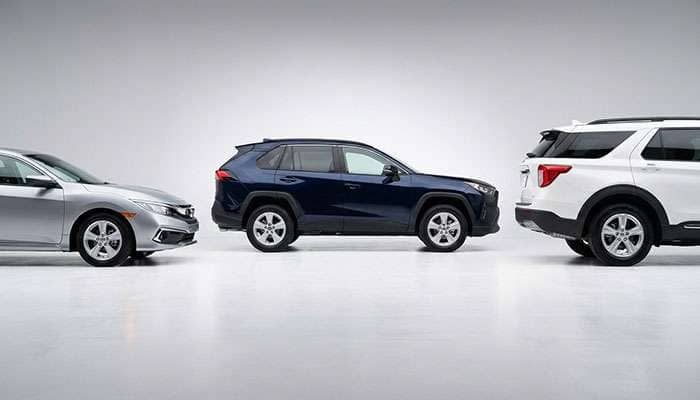
17-inch wheels deliver superior ride comfort through their taller sidewalls, which absorb road impacts and smooth out bumps that would otherwise jar your vehicle. When you're choosing wheels for your car or truck, 17-inch options provide the perfect sweet spot between handling performance and daily driving comfort.
We see drivers choosing 17-inch wheels for several practical reasons beyond just comfort. These wheels cost significantly less than larger alternatives, making them ideal for budget-conscious vehicle owners who want both style and savings. The lighter weight of 17-inch wheels can boost your fuel efficiency by reducing rolling resistance, putting money back in your pocket at every fill-up. Most importantly, the extra sidewall rubber acts as a protective barrier against pothole damage and curb impacts that can destroy expensive rims.
Daily drivers who prioritize safety appreciate how 17-inch alloy wheels perform on real roads. The additional sidewall cushioning reduces blowout risks while protecting your rims from the unexpected hazards you encounter every day. Even 16-inch wheels offer similar advantages with their taller sidewalls, delivering an even softer ride quality. While 18-inch and larger wheels might grab attention with their aggressive look, 17-inch wheels strike the right balance between functionality and performance-oriented style.
Our guide explores exactly why 17-inch wheels make sense for most drivers, comparing them against other popular sizes and helping you determine if they're the right match for your driving needs and vehicle type.

Wheel size impacts more than just appearance. The technical relationship between 17-inch wheels and your vehicle's performance involves three key areas that directly affect your driving experience.
17-inch wheels accommodate taller tire sidewalls compared to 18-inch or larger wheels, assuming the same overall tire diameter. These taller sidewalls function as natural shock absorbers, effectively dispersing energy from sudden impacts encountered on the road.
When your tire strikes a pothole or bump, taller sidewalls flex and absorb the impact force before it reaches your rim and suspension components. This flexibility explains why 17-inch setups typically deliver a smoother, more comfortable ride than larger wheel configurations.
The additional sidewall height acts as a protective buffer, significantly reducing the risk of rim damage when navigating rough terrain or encountering unexpected road hazards. For trail drivers, this extra sidewall flex proves particularly valuable, enhancing traction over obstacles while protecting both wheels and suspension.
Unsprung weight—the mass not supported by your vehicle's suspension—critically affects how your car handles. Since 17-inch wheels generally weigh less than their larger counterparts, they reduce this unsprung weight.
Your suspension system works more efficiently with lighter wheels. The performance implications include:
Quicker acceleration due to reduced rotational mass
Enhanced suspension responsiveness over uneven surfaces
Extended suspension component lifespan, particularly beneficial for daily drivers and commercial fleets
Reducing one pound of unsprung weight equals eliminating approximately eight to ten pounds of vehicle body weight. This makes wheel weight reduction among the most effective performance upgrades possible.
Maintaining proper rolling diameter proves essential when considering wheel size changes. Your vehicle's speedometer calibration depends directly on the number of tire revolutions per mile.
Installing taller tires with a larger overall diameter makes your speedometer display a slower speed than you're actually traveling, since the tire travels more distance per revolution. Conversely, shorter tires cause your speedometer to read faster than your actual speed.
A wheel/tire combination just 3% taller than stock would show 60 mph when actually traveling 61.8 mph. This difference might seem minor but could lead to unintentional speeding or traffic violations.
When changing wheel sizes, select tire dimensions that maintain the original rolling diameter—or recalibrate your speedometer accordingly.

Comfort and safety drive most wheel selection decisions. The taller sidewalls on 17-inch wheels provide measurable advantages in both categories that directly impact your daily driving experience.
Road vibration control depends entirely on how effectively your wheels and tires isolate cabin occupants from surface irregularities. 17-inch wheels with their taller sidewalls function as secondary shock absorbers, cushioning impacts that would otherwise transmit directly into your vehicle's interior. These flexible sidewalls significantly reduce the harsh vibrations that shorter sidewalls on larger wheels cannot absorb.
The difference becomes apparent on extended drives. One driver who switched from 18-inch to 17-inch wheels reported a dramatic reduction in cabin vibrations, particularly during longer commutes. This sidewall advantage works independently of your suspension system, adding an extra layer of comfort without expensive modifications.
Pothole damage represents a significant expense for vehicle owners, particularly in regions with deteriorating road infrastructure. The extra rubber between your rim and road surface provides crucial protection against sudden impacts that destroy wheels.
Studies demonstrate that tires with taller sidewalls reduce pothole damage risk by approximately 50% compared to low-profile alternatives. When your tire strikes a deep pothole, that additional sidewall material flexes and distributes impact forces across a larger area, preventing the concentrated stress that bends or cracks rims.
This protection advantage extends beyond just potholes. Curb strikes, railroad crossings, and construction zone debris all pose less risk to 17-inch wheels than to larger sizes with minimal sidewall protection.
Tire blowouts cause thousands of accidents annually. 17-inch wheels with adequate sidewall height reduce blowout risks through multiple mechanisms:
Better heat dissipation in the sidewall area
Reduced stress concentration during impact events
More forgiving response to underinflation
While proper tire pressure maintenance remains essential regardless of wheel size, the engineering reality is simple: more sidewall rubber provides additional safety margin when conditions deteriorate.

Understanding how 17-inch wheels stack up against other common sizes helps you make an informed decision. Each wheel size offers distinct trade-offs between performance, comfort, and practicality.
The jump from 17 to 18 inches changes your driving experience in measurable ways. 18-inch wheels deliver sharper steering response and more aggressive styling, but sacrifice comfort through reduced sidewall height.
Drivers notice the difference immediately. One owner who switched from factory 17-inch to aftermarket 18-inch wheels described the ride as "significantly harsher" with increased road noise and vibration. The lower profile tires on 18-inch wheels transmit more road imperfections directly into the cabin.
Cost differences matter too. Replacement tires for 18-inch wheels typically run $40-70 more per tire than comparable 17-inch options. Over the life of your vehicle, that premium adds up to hundreds of dollars in additional expenses.
Moving down to 16-inch wheels maximizes ride comfort through even taller sidewalls. These wheels excel in environments where road quality is poor or off-road capability matters.
The trade-off? 16-inch wheels sacrifice some of the crisp handling and modern aesthetics that 17-inch options provide. For enthusiast drivers who value responsive steering feel, 16-inch wheels may feel less direct during cornering maneuvers.
Tire selection for 16-inch wheels remains excellent, with robust options for all seasons. However, performance-oriented rubber tends to favor 17-inch and larger sizes.
Wheels 19 inches and larger dominate luxury vehicle marketing but come with significant compromises. Ultra-low profile tires on these wheels provide minimal impact protection, making rim damage almost inevitable in real-world conditions.
The financial impact extends beyond purchase price:
Single replacement tires often exceed $250-300 each
Rim repairs or replacements cost substantially more due to complex designs
Reduced fuel economy from increased rotational mass and rolling resistance
For daily drivers prioritizing practicality over appearance, large wheels represent an expensive downgrade in functionality.

Budget considerations influence every vehicle modification decision. 17-inch wheels deliver measurable financial advantages that extend far beyond initial purchase price.
The tire market offers abundant competition in the 17-inch segment, driving prices down through market forces. Quality all-season tires for 17-inch wheels typically cost $80-150 per tire, while comparable 18-inch options start at $120-220.
This price difference multiplies across your vehicle's lifetime. Assuming you replace tires every 40,000-50,000 miles and keep your vehicle for 150,000 miles, you'll save $320-560 over the vehicle's life simply by choosing 17-inch wheels over 18-inch alternatives.
Wheel replacement costs follow similar patterns. 17-inch alloy wheels start around $100 for quality options, while 18-inch equivalents begin at $150-200.
Lighter wheels reduce your vehicle's unsprung weight and rotational mass, both factors that directly impact fuel consumption. While individual results vary based on driving patterns and vehicle type, the engineering principles are sound.
Real-world data supports theoretical expectations. Drivers who downsized from 19-inch to 17-inch wheels report fuel economy improvements of 1-2 MPG in combined driving. For a vehicle driven 15,000 miles annually at 25 MPG, that 1 MPG improvement saves approximately $60-80 per year at current fuel prices.
Over ten years of ownership, fuel savings alone could offset the entire cost of a quality set of 17-inch wheels and tires.
Reduced impact transmission to suspension components extends component lifespan. While difficult to quantify precisely, mechanics consistently report that vehicles with appropriately sized wheels—particularly 17-inch on midsize vehicles—experience fewer suspension repairs than those running oversized wheels with minimal sidewalls.
Common suspension repairs that benefit from adequate sidewall protection include:
Shock absorber and strut replacement
Control arm bushing failures
Wheel bearing damage
Even preventing a single major suspension repair could save hundreds of dollars, further reinforcing the economic case for 17-inch wheels.

Not every driver needs 17-inch wheels, but specific use cases and driving environments make them the optimal choice. Understanding whether you fit these profiles helps guide your wheel selection decision.
17-inch wheels work best in particular situations where their unique advantages solve real-world problems.
Daily commuters find 17-inch wheels eliminate the fatigue that comes from harsh ride quality on long drives. The balance between responsive handling and comfort makes these wheels ideal for drivers covering significant mileage regularly. Fleet managers appreciate the economic benefits even more, with replacement costs starting around $100 and aluminum 17-inch rims weighing between 25-40 pounds. The reduced unsprung weight translates directly into lower fuel costs and extended suspension life across entire vehicle fleets.
17-inch wheels excel where road maintenance falls behind. The extra sidewall height absorbs the punishment from deteriorating pavement that would damage larger wheels. Drivers who made the switch from larger wheels report dramatically reduced harshness when hitting cracks and potholes. Rural areas with unpaved sections benefit from the additional sidewall flex, which provides better traction over loose surfaces while protecting both wheels and suspension components.
17-inch wheels offer the best tire selection across all weather conditions:
All-season tires deliver balanced wet and dry performance
Winter tires provide superior snow and ice traction
Performance tires enhance handling characteristics
Winter tire options designed for 17-inch wheels perform exceptionally in severe weather conditions, making them essential for snow-prone regions. 17-inch snow tires start around $80 per tire, combining affordability with reliable winter traction.
17-inch wheels fit a wide range of vehicle types, from compact cars to midsize sedans, crossovers, and smaller SUVs. The popular 225/65R17 tire size dominates the crossover and SUV market, capturing 5.8% of the U.S. replacement tire market. Vehicle manufacturers choose 17-inch wheels as standard equipment because they provide the optimal balance between appearance and functionality for these vehicle classes.
Browse our extensive collection of 17-inch wheels to find the perfect match for your daily driver, fleet vehicle, or SUV.
17-inch wheels represent the smart choice for drivers who want the best balance of comfort, performance, and value. We've shown you exactly why these wheels outperform larger alternatives in the areas that matter most for real-world driving.
The evidence speaks for itself. Taller sidewalls deliver superior comfort while protecting your expensive rims from costly damage. You get better fuel economy, lower replacement costs, and extended suspension life - benefits that add up to significant savings over time.
At Performance Plus Tire, we see customers choose 17-inch wheels because they work. Daily commuters appreciate the smooth ride quality on rough roads. Fleet managers value the cost savings and durability. Rural drivers count on the extra protection against road hazards.
The tire selection advantage cannot be ignored either. 17-inch wheels offer the widest range of options for every season and driving condition, from high-performance summer tires to dependable winter rubber.
17-inch wheels fit perfectly on most sedans, crossovers, and smaller SUVs. Major manufacturers choose this size as standard equipment because it delivers the right combination of style and functionality that drivers actually need.
Ready to upgrade your wheels? Explore our selection of high-quality 17-inch wheels at Performance Plus Tire to find the perfect match for your vehicle and driving needs.
The bottom line is simple: while 20-inch wheels might look impressive, 17-inch wheels deliver where it counts - giving you superior daily driving comfort, better protection, and more money in your pocket.
Discover why 17-inch wheels offer the perfect balance of performance, comfort, and value for most drivers:
• Superior ride comfort: Taller sidewalls absorb road impacts better than larger wheels, reducing cabin vibration and providing smoother rides on rough surfaces.
• Enhanced protection and safety: Extra rubber between rim and road reduces pothole damage risk by up to 50% while improving blowout resistance.
• Significant cost savings: 17-inch tires cost $40-70 less per tire than 18-inch options, with better fuel economy delivering 1-2 MPG improvements.
• Ideal for daily driving: Perfect balance for commuters, fleet vehicles, and rural drivers who prioritize comfort over aggressive styling.
• Versatile tire selection: Wide availability of all-season, winter, and performance options makes them suitable for any weather condition or driving need.
The evidence is clear: while larger wheels may look more aggressive, 17-inch wheels deliver superior real-world performance where it matters most—comfort, durability, and your wallet.
17-inch wheels offer a good balance of performance and comfort. They provide better cushioning against road imperfections due to taller sidewalls, reducing the risk of rim damage from potholes and curbs. Additionally, they are typically more cost-effective and can improve fuel efficiency due to reduced rolling resistance.
17-inch wheels generally provide a smoother ride compared to larger wheel sizes. The taller sidewalls absorb road impacts better, resulting in reduced cabin vibration and improved comfort, especially on rough surfaces. While they may offer slightly less precise handling than larger wheels, they still provide good responsiveness for most driving conditions.
Yes, 17-inch wheels are suitable for many SUVs and sedans. They are a popular choice for these vehicle types as they offer a good balance between esthetics and functionality. Many manufacturers offer 17-inch wheels as standard options for crossovers, smaller SUVs, and midsize sedans because they provide adequate performance without compromising ride quality.
17-inch tires are generally less expensive than larger sizes and offer a wider selection of options. This makes them more cost-effective for replacement and provides greater flexibility in choosing tires for different seasons or driving conditions. The lower cost and broader availability make 17-inch wheels an economical choice for many vehicle owners.
17-inch wheels can contribute to better fuel efficiency compared to larger wheel sizes. Their lighter weight reduces the vehicle's overall mass and rolling resistance, which can lead to improved gas mileage. Some drivers report fuel economy gains of 1-2 MPG when switching from larger wheels to 17-inch options, making them a practical choice for those prioritizing efficiency.